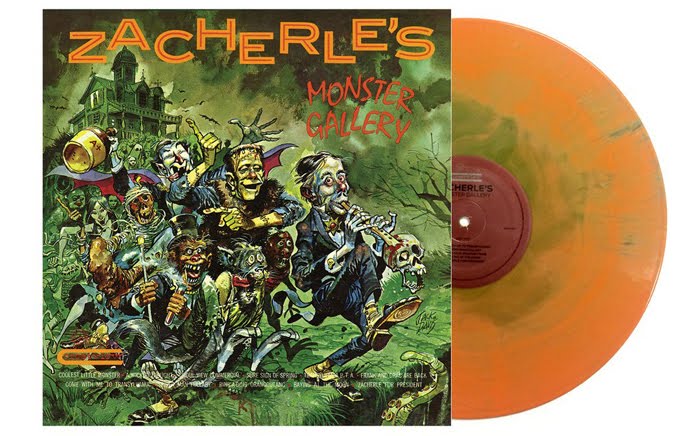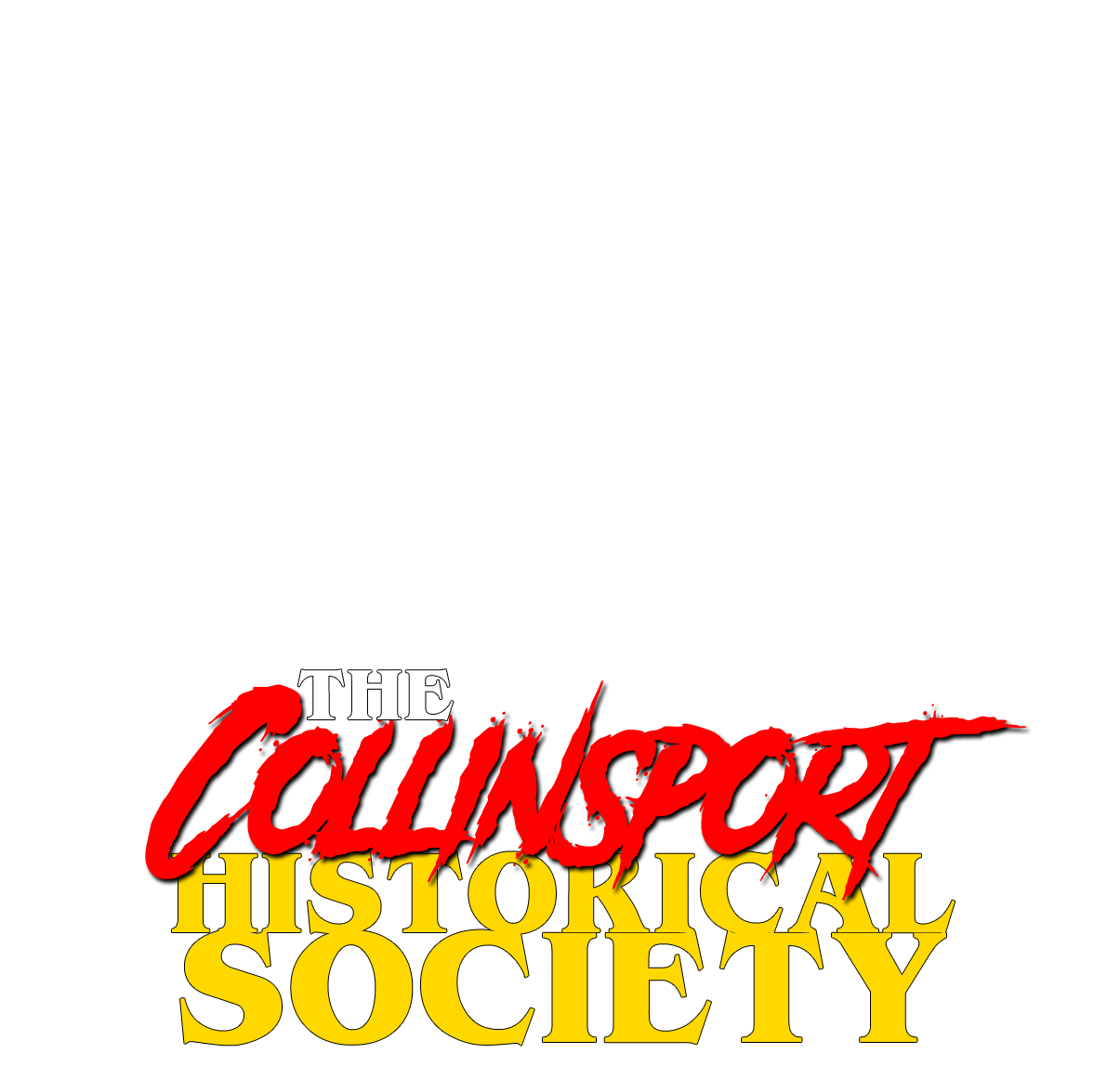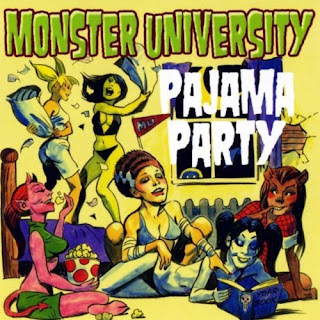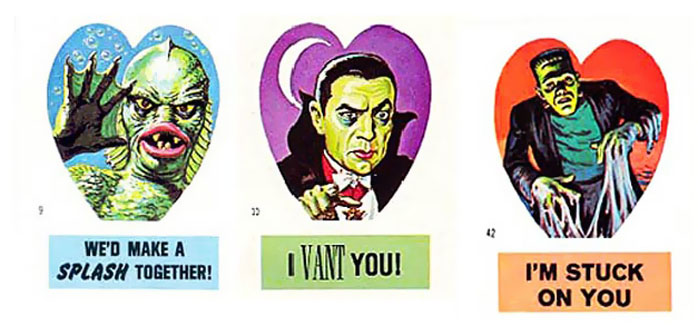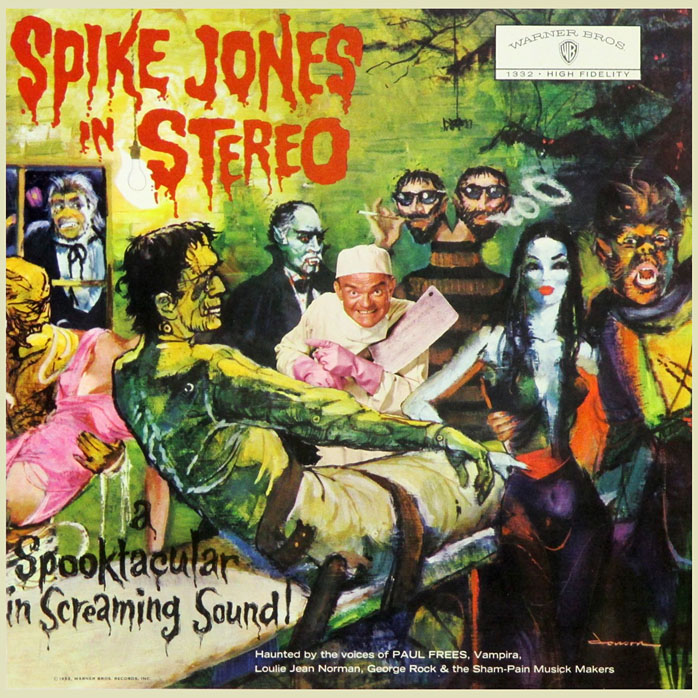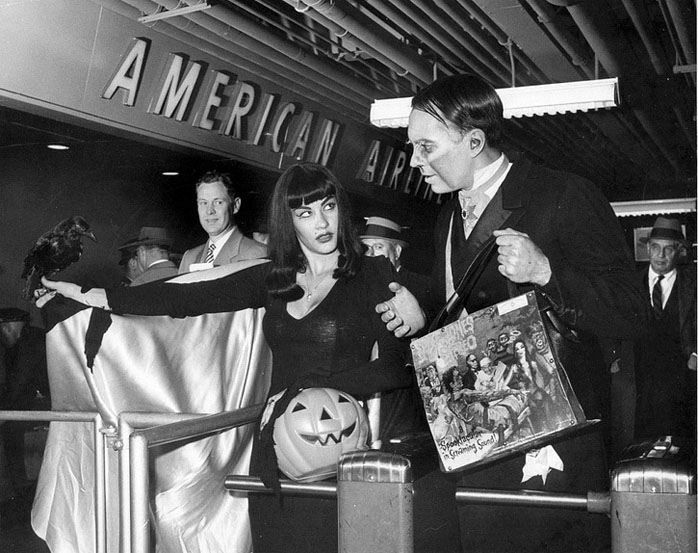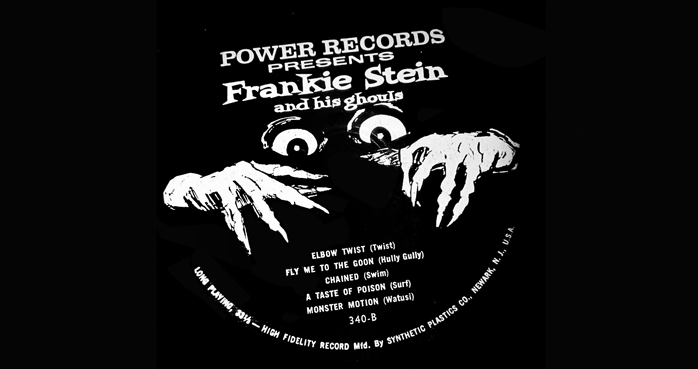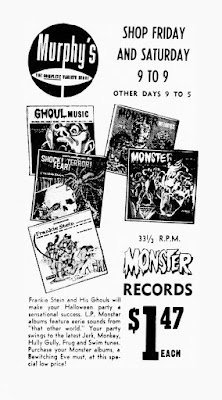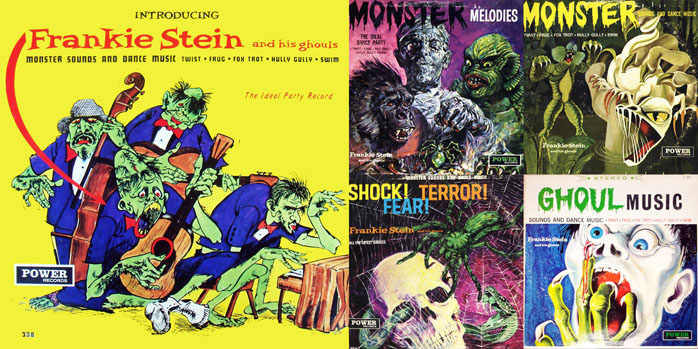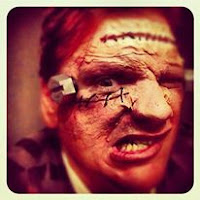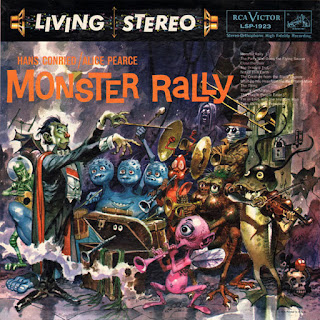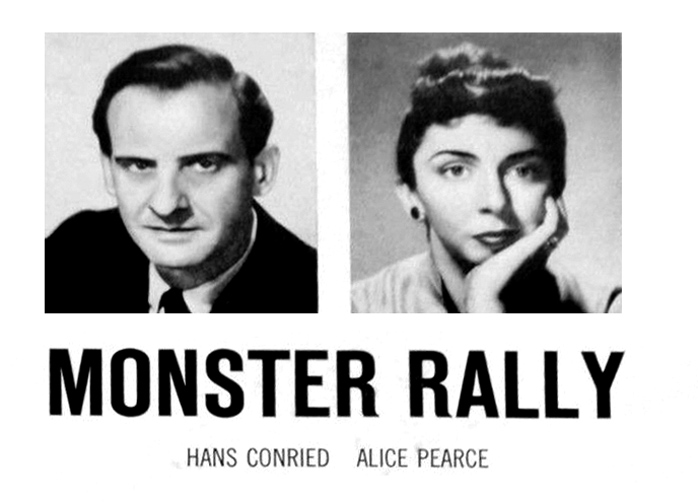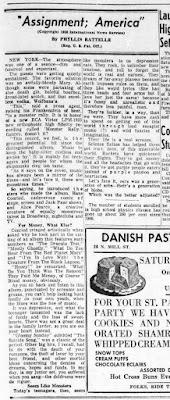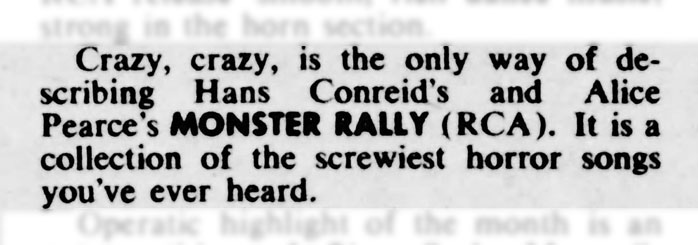By WALLACE McBRIDE
Rewind to 1984. A tape of DAWN OF THE DEAD is quietly spooling in my Betamax as age-inappropriate gore splatters across the screen. It's a beautiful sunny day, and I should be outside instead of sitting on the couch, eating chili dogs and watching blue-faced Pittsburgians pretend to kill each other. As one zombie with a conspicuously large cranium walks into the blades of a helicopter, I look down at the sloppy plate of food in my lap and wonder why I don't feel any revulsion at what just happened.
I was 12 years old at the time.
It was a fleeting concern. Years later, Quentin Tarantino would explain away this seeming lack of empathy by rightfully pointing out that violence, like singing and dancing, is just something you expect from movies. It's not real and we instinctively know this, which is why it takes great filmmakers to make us feel anything during a movie. Happiness. Fear. Sadness. Humor. Sure, you might be surprised by a character's sudden death in a film, but it's not like you actively go into mourning for them. Your subconscious keeps your emotional response in check no matter how sincere those feelings might seem.
So, yeah. When the "flattop zombie" was scalped in DAWN OF THE DEAD, I knew it wasn't real violence. It was more in line with a magic trick than anything else. I even knew the name of the magicians responsible: George Romero and Tom Savini. While somebody who never read an issue of Fangoria might have found the sequence disturbing, horror fans knew better. It was all part of the show. If you're going to be offended by something as innocuous as a horror movie, you're probably going to have a goddamn exhausting life.
Skip ahead to last night. After spending almost an hour flipping through my many, many options on Amazon Prime, Hulu, Netflix, Midnight Pulp and Shout, I realized my tastes in horror movies had re-calibrated themselves. My wife was at work, my kid was in bed and I could watch anything I wanted. But everything just seemed too extreme, for lack of a better word.
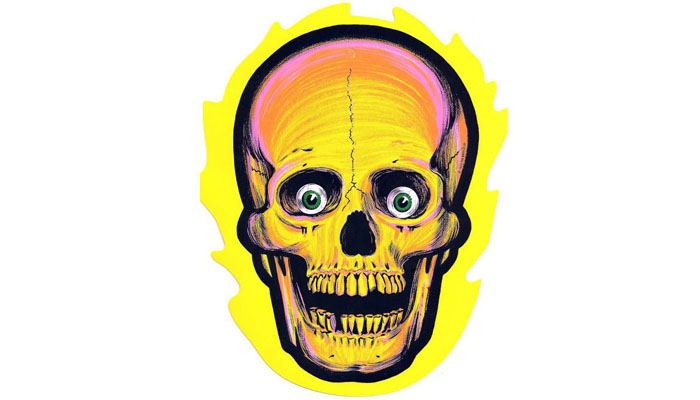 |
| Me watching horror movies as an adult. |
Some of this can be partly blamed on the three-year-old child living in my house. When you spend your days worrying if your kid's next stumble will lead to stitches, the kinds of traumas inflicted in horror movies will put your empathy into overload. For me, a movie like HALLOWEEN now plays out like a Greek tragedy of parental failure. It's just not that much fun anymore to watch teenagers get dismembered by faceless maniacs. (I'll have "Things a Psychopath Says" for $200, Alex.)
Which leaves me with a bit of a problem in this, the season of my people: How the hell do you celebrate Halloween without bingeing on horror movies? It's too important a holiday to fake my way though, like Christmas. But last night's channel surfing left me a little worried that adulthood - that jowled, many headed beast - had taken one more thing away from me.
And then I remembered Zacherle, the late horror television host. I fell in love with Zacherle at age 6 when my parents gave me a copy of Ronco's "Funny Bone Favorites." Buried on that collection of novelty songs was Zacherle's "Dinner with Drac" from 1958. (Zacherle died last year at the ripe old age of 98, and had only recently retired from making festival appearances.)
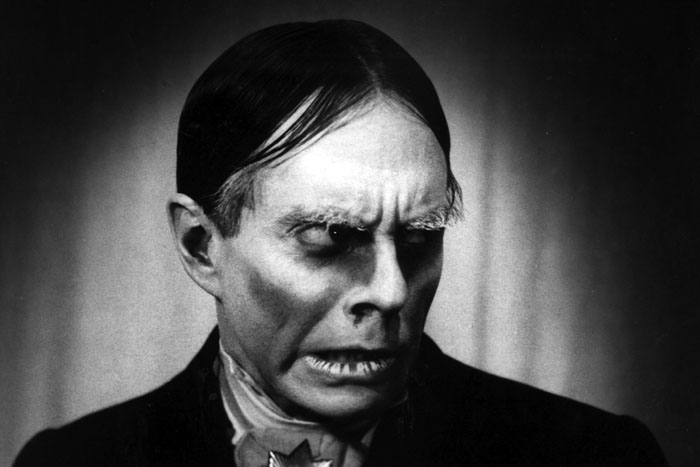
Zacherle, sometimes billed as "Roland" or "Zacherley," hosted "Shock Theater" in Philadelphia from 1957-58 before moving to New York City to host "Zacherley at Large" for a year. He was a guest host for "American Bandstand" during the 1960s when Dick Clark was absent, made appearances in everything from CAPTAIN KANGAROO to Rob Zombie records, and was an all-around swell guy. While the competition is stiff, I'd argue that he's the best horror host in television history.
For some, myself included, Zacherle is pure, undiluted Halloween. And you can take a hit off that spooky bong whenever you like, thanks to his recordings. In my opinion, his first album remains his best. Released in 1960, "Spook Along With Zacherley" is a darkly hilarious album that features a lot of clever wordplay:
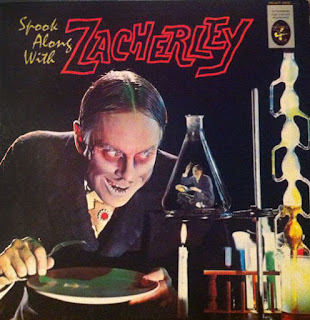 I'll send a small box of small pox
I'll send a small box of small poxA large tub of hubbub
Your own noose for home use
A crate full of hateful
For some strange reason, "Spook Along" managed to omit "Dinner with Drac," which shows up on Zacherle's second album, "Monster Mash." (That album became a bone of contention for Bobby "Boris" Pickett, whose label took so long to get his own "Monster Mash" LP in stories that Zacherle's beat him to the punch by a few months.) But "Spook Along" is more consistent in both its choice of songs and its sketches. The radio spot for "Ghoul View Cemetery" is the best Rankin-Bass cartoon that never happened, while "Zacherley For President" feels like a better idea than ever. "Put a vampire in the White House just for fun!" Sign me right the fuck up.
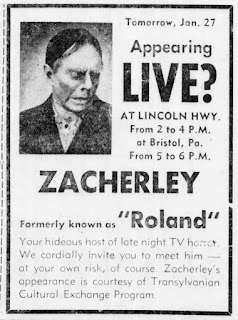 The album also straddles a lot of musical conventions, both new and old. Because of his work on radio and television, Zacherle and his producers were in touch with the youth market, which allowed him to inject a little rock and roll and teenage vernacular into his songs. But the tracks also keep one foot in the kinds of playful ballads of the 1940s, creating a hybrid that was hip ... but not too hip. Revisiting Zacherle's music is more like revisiting Universal's best monster movies than it is the music of its time. "Spook Along" often feels older than its years, but in a good way. Much like Dracula, Zacherle is a ghoul eager to catch up with the changing times. Luckily for his fans, the big Z was more successful in achieving his goals.
The album also straddles a lot of musical conventions, both new and old. Because of his work on radio and television, Zacherle and his producers were in touch with the youth market, which allowed him to inject a little rock and roll and teenage vernacular into his songs. But the tracks also keep one foot in the kinds of playful ballads of the 1940s, creating a hybrid that was hip ... but not too hip. Revisiting Zacherle's music is more like revisiting Universal's best monster movies than it is the music of its time. "Spook Along" often feels older than its years, but in a good way. Much like Dracula, Zacherle is a ghoul eager to catch up with the changing times. Luckily for his fans, the big Z was more successful in achieving his goals.In 1963, Elektra re-released "Spook Along With Zacherley" on its Crestview Records subsidiary and gave it a makeover. While the track list was unchanged, Crestview drafted none other than Jack Davis to create the art for the newly re-christened "Zacherle's Monster Gallery." For whatever reason, the "Spook Along" edition became the one that's lingered in popular culture, even getting a CD release in 2001. In August, though, Real Gone Music put the album back into circulation, this time with the Davis art and the "Monster Gallery" title. Pressed on orange and green "pumpkin" vinyl, the release is limited to 1,000 copies.
I ordered a copy of the pumpkin vinyl a few weeks ago, which was probably the first sign than my ambiguous feelings about Halloween were drifting to more innocent times. Although my respect for THE TEXAS CHAIN SAW MASSACRE is undiminished, these days I'd rather spend the holiday with the likes of Zacherle. It's the perfect sort of escapism I need this time of year. After all ... life sucks and we're all gonna die, so you might as well have a little fun before the bouncers toss us out.
